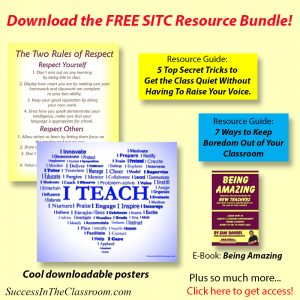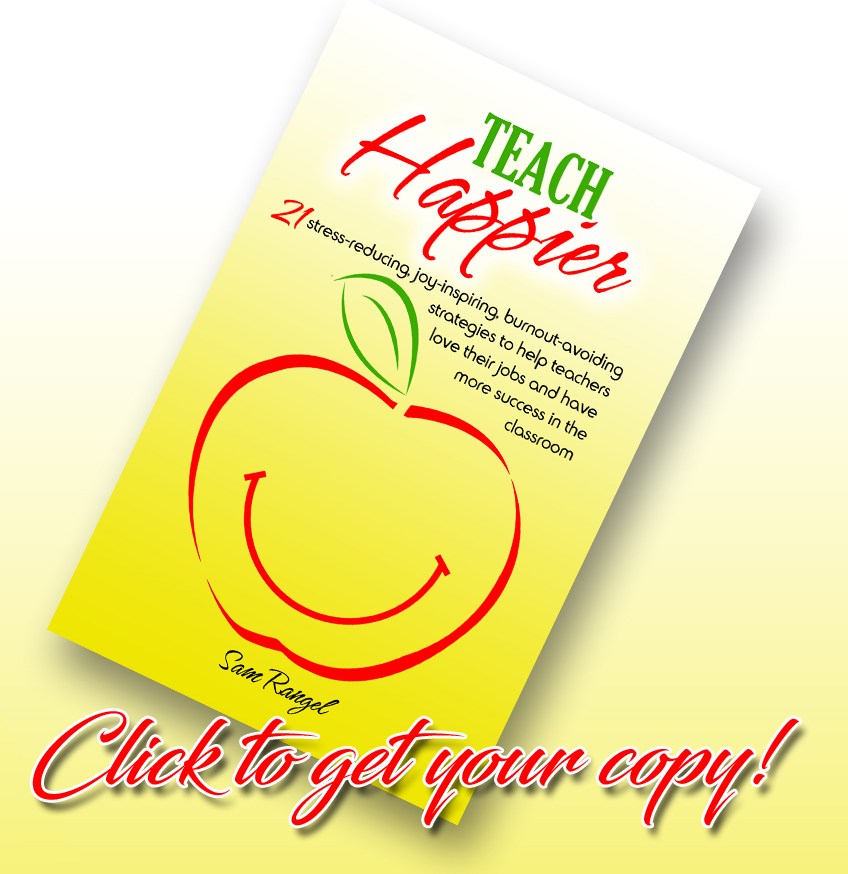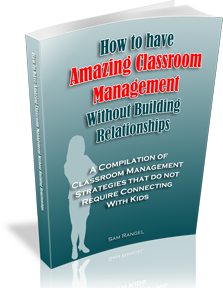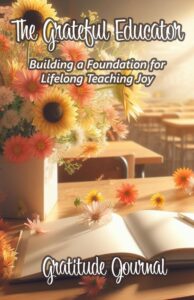As you know, I have just released my latest book, Teach Happier – 21 stress-reducing, joy-inspiring, burnout-avoiding strategies to help teachers love their jobs and have more success in the classroom. I am so proud of this book, because it provides some practical strategies that teachers can implement into their lives to bring more happiness into their classrooms, and as a result have more success.
As I continue my journey into the topic of happiness, I have found more and more books on the subject. One book that I recently read was Mo Gawdat’s, Solve for Happy – Engineer Your Path to Joy. In this book, Mo asks the question, “What’s in the full half of the glass?”
We often hear how some people see the glass half full, while others see the glass half empty. We identify these people as either optimistic or pessimistic based on how they see their glass.
Mo, along with a lot of other experts in the topic of happiness, tell us that our brains are naturally inclined to focus on the negative – the empty half of the glass. We have what experts call a negativity bias.
It’s not a bad thing. It’s just the way we are programmed.
What Mo helps us to do, to bring more happiness back into our lives, is remind us that we have a choice. We can choose to focus on what we don’t have – the empty half, or we can make a decision to identify what we do have – the full half of the glass.
After reading Mo’s book, it inspired me to add another Teach Happier strategy – number 22: Identify What’s in the Full Half of Your Glass.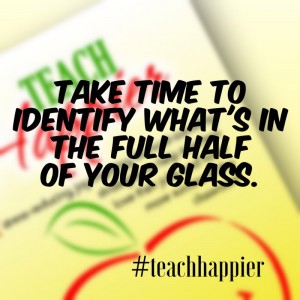
As teachers, it’s easy for us to make a list of what we don’t have – enough time, working technology, students reading at grade level, supportive parents, enough school supplies, etc. By focusing on what we don’t have – the empty half of the glass, we feel frustrated, stressed, and unhappy.
What this strategy asks teachers to do is to take time to identify what is in the full half of their glass. What is it that you do have? If I was a teacher, my list would include: A good-paying job, a clean work environment, helpful co-workers, air conditioning, a free prep period, lunch time with friends, the smiling faces and “good mornings,” of my students as they walk in the door, etc.
By choosing to take the time to identify and list what’s in the full half of our glass, we can’t help but be happier, and that will make it a better day for everyone, especially your students.
This is a strategy that I have not only used in my professional life, but I’ve also begun making a list of what’s in my personal life’s full half of the glass: My lovely wife, my kids, the ability to see the beauty of nature as a I go for my morning run, the ability to run, the ability to see, chocolate, friends, my church family, my piano, the joy of leading the congregation in a time of praise and worship on Sundays, reading a good book, and the list goes on.
I felt happier just making that list. Why?
Once we begin to identify what’s in the full half of our glass, we cannot help but to feel grateful. Life has so many more good things for us than bad things, and when we take time to realize this, that feeling of gratitude fill us up, and gratitude is a key component and catalyst of happiness.
I would encourage you to begin your list. What’s in the full half of your glass? I have my list on my phone’s note pad app. Every time I think of something that I am grateful for, I pull out my phone and jot it down. I know that when I’m beginning to fall back into my “glass half empty” mode, all I have to do is read through my ever-growing list of good things on my phone.
Give it a try. Begin your list.
Please feel free to share your list with others by commenting below or on Twitter. Use the hashtag: #teachhappier.
Until next time, here’s to your Success in the Classroom!
Thanks,
Sam
Don’t forget to check out my book. It’s available on Kindle too.
